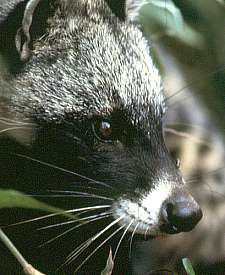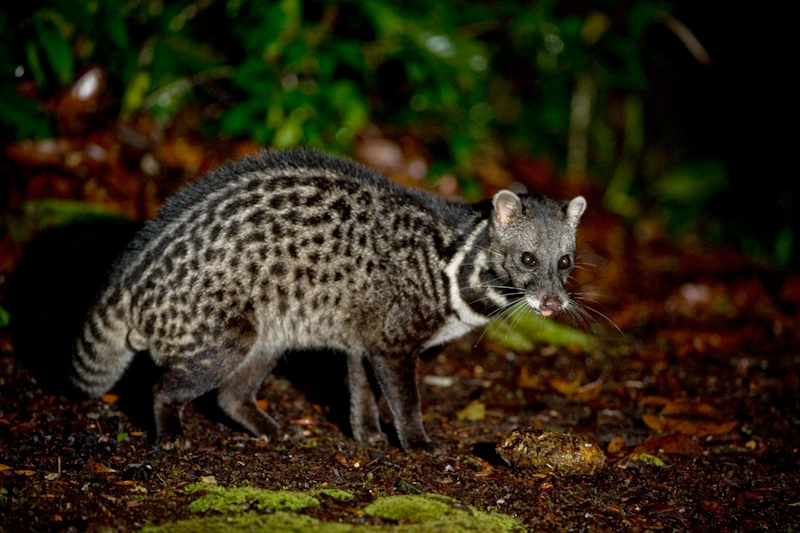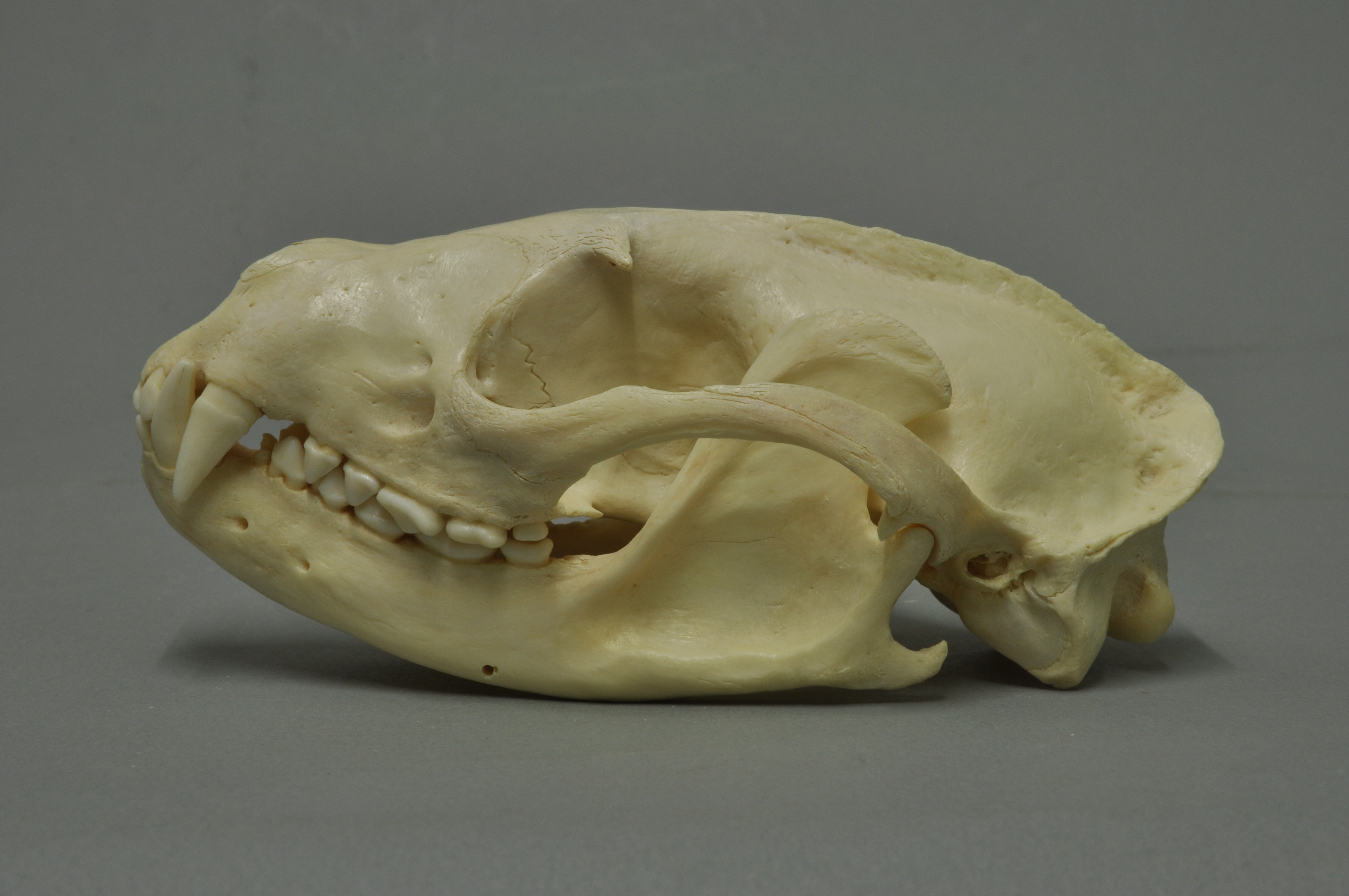|
Viverrinae
The Viverrinae represent the largest subfamily within the Viverridae comprising five genera, which are subdivided into 22 species native to Africa and Southeast Asia. This subfamily was denominated and first described by John Edward Gray in 1864.Gray, J. E. (1864)''A revision of the genera and species of viverrine animals (Viverridae), founded on the collection in the British Museum'' Proceedings of the Zoological Society of London for the year 1864: 502–579. Classification Gray defined the Viverrinae as comprising the genera ''Proteles'', ''Viverra'', ''Bassaris'' and '' Viverricula''. He subordinated the genera '' Genetta'' and ''Fossa'' to the Genettina, the genera '' Prionodon'' and ''Poiana'' to the Prionodontinae. Reginald Innes Pocock suggested that the African genets (''Genetta'') are also most nearly related to the Viverrinae, but should perhaps form a separate subfamily.Pocock, R. I. (1939)''The fauna of British India, including Ceylon and Burma. Mammalia. – Vol ... [...More Info...] [...Related Items...] OR: [Wikipedia] [Google] [Baidu] |
Viverridae
Viverridae is a family (biology), family of small to medium-sized, feliform mammals. The viverrids () comprise 33 species placed in 14 genera. This family was named and first described by John Edward Gray in 1821. Viverrids occur all over Africa, southern Europe, and South Asia, South and Southeast Asia, across the Wallace Line. Their occurrence in Sulawesi and in some of the adjoining islands shows them to be ancient inhabitants of the Old World tropics. Characteristics Viverrids have four or five toes on each foot and half-retractile claws. They have six incisors in each jaw and Molar (tooth), molars with two tubercular grinders behind in the upper jaw, and one in the lower jaw. The tongue is rough with sharp prickles. A pouch or Anal gland, gland occurs beneath the anus, but there is no cecum. Viverrids are the most primitive of all the families of Feliformia, feliform Carnivora and clearly less specialized than the Felidae. In external characteristics, they are distinguishe ... [...More Info...] [...Related Items...] OR: [Wikipedia] [Google] [Baidu] |
African Civet
The African civet (''Civettictis civetta'') is a large viverrid native to sub-Saharan Africa, where it is considered common and widely distributed in woodlands and secondary forests. It is listed as Least Concern on the IUCN Red List since 2008. In some countries, it is threatened by hunting, and wild-caught individuals are kept for producing civetone for the perfume industry. The African civet is primarily nocturnal and spends the day sleeping in dense vegetation, but wakes up at sunset. It is a solitary mammal with a unique coloration: the black and white blotches covering its coarse pelage and rings on the tail are an effective cryptic pattern. The black bands surrounding its eyes closely resemble those of the raccoon. Other distinguishing features are its disproportionately large hindquarters and its erectile dorsal crest. It is an omnivorous generalist, preying on small vertebrates, invertebrates, eggs, carrion, and vegetable matter. It is one of the few carnivores capabl ... [...More Info...] [...Related Items...] OR: [Wikipedia] [Google] [Baidu] |
Hemigalinae
The Hemigalinae are a subfamily of the viverrids denominated and first described by John Edward Gray in 1864. Hemigalinae species are native to Southeast Asia from southern China through Indochina, Malay Peninsula to Sumatra, Borneo and Sulawesi. Characteristics The tails of Hemigalinae species are ringed. The toes and the middle of the lower part of the tarsus are bald. The frenum, upper part, and sides of the lower part are hairy. The orbit is imperfect. Hemigalinae resemble the Viverrinae in having the scent glands present in both sexes and wholly perineal, but differing by their simpler structure, consisting in the male of a shallower, smaller pouch, with less tumid lips, situated midway between the scrotum and the penis, but not extending to either. In the female, the scent glands consist of a pair of swellings, each with a slit-like orifice, situated one on each side of the vulva and a little behind it and on a common eminence, the perineal area behind this eminence being ... [...More Info...] [...Related Items...] OR: [Wikipedia] [Google] [Baidu] |
Civettictis
''Civettictis'' is a genus of viverrid that contains the extant African civet ''(Civettictis civetta)'' and a recently described extinct relative from the Plio-Pleistocene of South Africa known as '' Civettictis braini''. Evolution A 2006 phylogenetic In biology, phylogenetics (; from Greek φυλή/ φῦλον [] "tribe, clan, race", and wikt:γενετικός, γενετικός [] "origin, source, birth") is the study of the evolutionary history and relationships among or within groups o ... study showed that the African civet is closely related to the genus '' Viverra''. It was estimated that the ''Civettictis''-''Viverra'' clade diverged from '' Viverricula'' around 16.2 Mya; the African civet split from ''Viverra'' 12.3 Mya. The authors suggested that the subfamily Viverrinae should be bifurcated into Genettinae ('' Poiana'' and '' Genetta'') and Viverrinae (''Civettictis'', ''Viverra'' and '' Viverricula''). The following cladogram is based on this study. Refer ... [...More Info...] [...Related Items...] OR: [Wikipedia] [Google] [Baidu] |
Poiana (genus)
The African linsangs also known as oyans are two species classified in the mammalian subfamily Viverrinae, in the family Viverridae. There is one genus, ''Poiana''. The name ''linsang'' is from Javanese ''linsang'' or ''wlinsang'', which used to be wrongly translated as "otter" in English dictionaries. Linsangs are nocturnal, generally solitary tree dwellers. They are carnivorous, eating squirrels and other rodents, small birds, lizards and insects. Typical size is a little over 30 cm (1 foot), with a tail that more than doubles that length. Bodies are long, with short legs, giving a low appearance. Both species have yellowish bodies with black markings (stripes, blotches and spots), though the distribution and nature of the markings varies between the two species. Taxonomy The genus ''Poiana'' was erected by John Edward Gray in a paper read at the 8 November 1864 meeting of the Zoological Society of London and published the following year, in the ''Proceedings of the Z ... [...More Info...] [...Related Items...] OR: [Wikipedia] [Google] [Baidu] |
Prionodontinae
The Asiatic linsang (''Prionodon'') is a genus comprising two species native to Southeast Asia: the banded linsang (''Prionodon linsang'') and the spotted linsang (''Prionodon pardicolor''). ''Prionodon'' is considered a sister taxon of the Felidae. Characteristics The coat pattern of the Asiatic linsang is distinct, consisting of large spots that sometimes coalesce into broad bands on the sides of the body; the tail is banded transversely. It is small in size with a head and body length ranging from and a long tail. The tail is nearly as long as the head and body, and about five or six times as long as the hind foot. The head is elongated with a narrow muzzle, rhinarium evenly convex above, with wide internarial septum, shallow infranarial portion, and philtrum narrow and grooved, the groove extending only about to the level of the lower edge of the nostrils. The delicate skull is long, low, and narrow with a well defined occipital and a strong crest, but there is no complet ... [...More Info...] [...Related Items...] OR: [Wikipedia] [Google] [Baidu] |
Prionodon
The Asiatic linsang (''Prionodon'') is a genus comprising two species native to Southeast Asia: the banded linsang (''Prionodon linsang'') and the spotted linsang (''Prionodon pardicolor''). ''Prionodon'' is considered a sister taxon of the Felidae. Characteristics The coat pattern of the Asiatic linsang is distinct, consisting of large spots that sometimes coalesce into broad bands on the sides of the body; the tail is banded transversely. It is small in size with a head and body length ranging from and a long tail. The tail is nearly as long as the head and body, and about five or six times as long as the hind foot. The head is elongated with a narrow muzzle, rhinarium evenly convex above, with wide internarial septum, shallow infranarial portion, and philtrum narrow and grooved, the groove extending only about to the level of the lower edge of the nostrils. The delicate skull is long, low, and narrow with a well defined occipital and a strong crest, but there is no complet ... [...More Info...] [...Related Items...] OR: [Wikipedia] [Google] [Baidu] |
Viverra
''Viverra'' is a mammalian genus that was first nominated and described by Carl Linnaeus in 1758 as comprising several species including the large Indian civet (''V. zibetha''). The genus was subordinated to the viverrid family by John Edward Gray in 1821. Characteristics ''Viverra'' species are distinguished externally from the other genera of the Viverrinae by the structure of the fore feet: the third and fourth digits have lobes of skin, which act as protective sheaths for the retractile claws. The pads of the feet are surrounded by hair. They have a long and narrow skull, with narrow, nearly parallel-sided, not strongly constricted waist. Their postorbital processes are small and a little in front of the middle point between the tip of the premaxillae in front and of the occipital crest behind. The sagittal crest is moderately strong in adults. The sub-orbital portion of the cheek is comparatively short. The suture between the anterior bone of the zygomatic arch and the ... [...More Info...] [...Related Items...] OR: [Wikipedia] [Google] [Baidu] |
North-America
North America is a continent in the Northern Hemisphere and almost entirely within the Western Hemisphere. It is bordered to the north by the Arctic Ocean, to the east by the Atlantic Ocean, to the southeast by South America and the Caribbean Sea, and to the west and south by the Pacific Ocean. Because it is on the North American Tectonic Plate, Greenland is included as a part of North America geographically. North America covers an area of about , about 16.5% of Earth's land area and about 4.8% of its total surface. North America is the third-largest continent by area, following Asia and Africa, and the fourth by population after Asia, Africa, and Europe. In 2013, its population was estimated at nearly 579 million people in 23 independent states, or about 7.5% of the world's population. In human geography and in the English-speaking world outside the United States, particularly in Canada, "North America" and "North American" can refer to just Canada and the United St ... [...More Info...] [...Related Items...] OR: [Wikipedia] [Google] [Baidu] |
Paguma
The masked palm civet (''Paguma larvata''), also called the gem-faced civet, is a palm civet species native to the Indian subcontinent and Southeast Asia. It has been listed as least concern on the IUCN Red List since 2008 as it occurs in many protected areas, is tolerant to some degree of habitat modification, and widely distributed with presumed large populations that are unlikely to be declining. The genus ''Paguma'' was first named and described by John Edward Gray in 1831. All described forms are regarded as a single species. In 2003, masked palm civets at a wildlife market in China were found to have been infected with the severe acute respiratory syndrome coronavirus. Characteristics The masked palm civet's fur is grayish to ochraceous, black on the head, shoulders and neck, and blackish brown on the tail and feet. It has a white blaze on the forehead; white marks above and below the eyes extend to the ears, forming a half-collar. In morphology the masked palm civ ... [...More Info...] [...Related Items...] OR: [Wikipedia] [Google] [Baidu] |
Paradoxurus
''Paradoxurus'' is a genus of three palm civets within the viverrid family that was denominated and first described by Frédéric Cuvier in 1822. The ''Paradoxurus'' species have a broad head, a narrow muzzle with a large rhinarium that is deeply sulcate in the middle. Their large ears are rounded at the tip. The tail is nearly as long as the head and body. The three species are the Asian palm civet, the Golden palm civet, and the Brown palm civet. Characteristics ''Paradoxurus'' species have a broad head, a narrow muzzle with a large rhinarium that is deeply sulcate in the middle. Their large ears are rounded at the tip, the interior ridges and bursae are well developed. The skull exhibits marked muscular moulding, and the postorbital area is deeply constricted shortly behind the well-developed postorbital processes. It is considerably narrower than the interorbital area and than the muzzle above the canines. The dental formula is . The palate is not produced behind to cove ... [...More Info...] [...Related Items...] OR: [Wikipedia] [Google] [Baidu] |





.png)

.jpg)

.jpg)